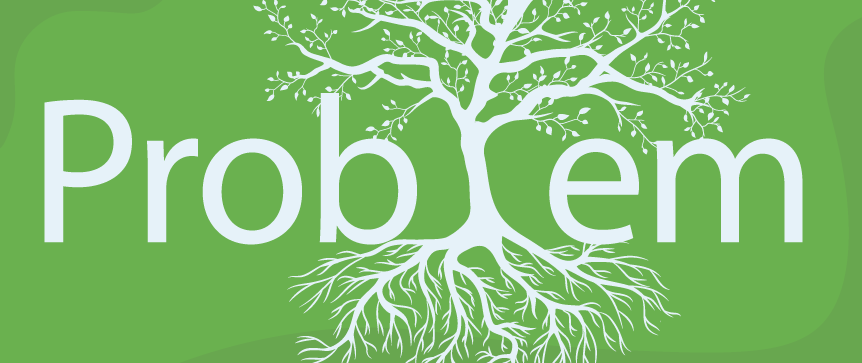Teacher in a Strange Land: Six Gigantic Problems, Six Wrong Solutions in Public Education
So here we are, at our local schools, trying to stay afloat, with daily crises incoming.
The adults who are still bravely teaching, teaching, teaching (+ making administrative and child welfare decisions) in spite of the fact that the world seems to be on fire around them, need help. Don’t take my word—just read pretty much any educator-written blog from 2021.
When we have massive social problems, how do we generate and roll out solutions?
The answer is: Policy.
Policy is how we mounted a successful response before, during and after World Wars, developed and refined sequential national transportation and communication systems, and came back from significant economic depressions. We can point to any number of policy-driven transformations in these United States.
Once policy is put in place, and implemented, we can see its real-world effects. Optimally, the policy will be tweaked until it does what it’s supposed to do: solve the problem. Or at least move things in the right direction.
Yes, it’s infinitely more complex than that—designing good policy is way more than guesswork and a good feeling about how to fix the trouble. And yes, policies sometimes make things worse. Way worse.
I would argue that public education is one area where terrible policy is now endemic—and sometimes, after clear failure, overlaid with even worse policy. The sheer dispersal of decision-making responsibility is part of the reason. There are legislative levels—federal/state/local—and a whole array of other organizations (the PTA) and people (the Athletic Director, the Union president) who have policy-making roles, assigned as well as assumed.
In fact, it’s hard to think of an education-related policy that has effectively and sustainably worked, beyond the granddaddy of all ed policy: a free, high-quality, fully public education for every American child, no matter what they bring to the table.
Lately, this wrong-policy trend in education has been on steroids—both the frightening gravity of the problems as well as the foolish, even ludicrous suggestions to address them.
A few examples:
PROBLEM: School shooting in Michigan
WRONG SOLUTION: (from a member of the State School Board, no less)—eliminating the attendance requirement for children to go to school in Michigan. State Board of Education member and Republican Tom McMillin posted this suggestion on Facebook last week, saying the “state needs to stop dictating terms of education of our kids.” You may wonder how McMillin construed this as a solution to mass shootings, but he claimed parents could improve their children’s mental health by keeping them home for as long as they chose.
PROBLEM: Underfunded schools, leading to low salaries and lack of resources
WRONG SOLUTION: A Cash Stampede with teachers on their knees, grabbing dollar bills, in competition with other teachers. I’ve seen this horrible video compared to the Hunger Games, but to me–with the cheering audience teachers on their knees, scrambling to pay for the tools they need to work– I am picturing the Christians and the lions, at the Colosseum in Rome. So amusing! BTW, you don’t have to be a policy expert to see what the only real solution to this problem is.
PROBLEM: Student mental health crisis, due to the isolation and uncertainty of being a child during a global pandemic
WRONG SOLUTION: Deciding that Social-Emotional Learning initiatives, whether they be commercial programs or merely a group of educators trying to help kids get through the first worldwide crisis in their lifetime, are somehow tied to Critical Race Theory, and therefore should be formally banned in our classrooms. Or that SEL is a ‘perilous’ waste of time and money, stealing time from Algebra. There are many viable ways to address the mental health crisis. All will be multi-faceted, and involve an array of attentive and thoughtful adults, determined to buoy the children in their care.
PROBLEM: Not enough teachers, not enough subs, not enough bus drivers
WRONG SOLUTION: Lowering the bar to get warm bodies in classrooms or behind the wheel. Or hiring year-long unqualified substitutes because the requirements for subs are less. Once again, there are many viable policy options to fix this. Suggesting we throw up our hands and let anybody in our classrooms is not only counterproductive—it’s dangerous.
PROBLEM: Student scores on standardized tests remain stagnant, or go down
WRONG SOLUTION: Fix the teachers, through rigorous evaluation of their behaviors and ‘success,’ including those same test scores. If this solution feels convoluted—well, the idea that a mountain of data could serve as a spur to improve practice has never worked particularly well, anywhere. It’s a data-focused non-problem, with a data-focused solution, neither of which matter much, in the real outcomes we want from public education.
PROBLEM: As COVID numbers rise, merely coming to school is stressful. Widespread absences and anxiety.
WRONG SOLUTION: Adding more half-days to the school schedule. This one started out on the right track—less time exposed to unvaccinated children, pre-planned time away from face-to-face learning. But, as most districts have learned, asking for Wednesday afternoons off is not likely to endear you to parents, who have pushed for full-time school in a pandemic, because they need to work. Less time in school and more technology-focused interaction is probably where we’re headed anyway, like it or not. Four-day weeks. Virtual conferencing. On-line lessons. The new normal. But let’s not worsen the child care crisis in the process.
There have been some good suggestions for addressing issues bubbling up in 2021, the best of which are coming from those closest to the work. And there have been some heavily recycled, proven-wrong policy frameworks that the same old policy creators having been pushing for two decades now, thrown out to see if they’ll stick, when everyone’s distracted by the ongoing dumpster fire.
Where should policy-creators get their ideas about solving big problems?
Because we are living in a completely different world now than we were two years ago, we should look first at the proposed solutions from people who are up close and personal with the problem. The people who are still, in spite of the danger and frustration, willing to be public school educators.
One last thing, for those who would like to tailor solutions to ‘the marketplace’ rather than the common good: Problems in public education are also problems in private and quasi-private (read: charter) schools. School violence, student mental health, the empty teacher pipeline, lack of resources—they’re apparent across the country, in all kinds of schools.
I got a heart-tugging message from a friend who is Principal in a small Catholic elementary school on the border of Detroit, a couple days after the shooting in Oxford. Local police had alerted her to threats that were ‘terrorist in nature,’ suggesting the school close down. But in consultation with her staff, they thought students (who had lost many relatives and caregivers over the past year) would be safer in school.
She said it was a fairly normal day, although she couldn’t wait for the dismissal bell. Then, she went home and threw up.
She wrote:
I am so done with all of this. My job is no longer one of an educational leader. I am an emergency manager around pandemic, school safety, bad weather conditions that flood our school or knock the boiler out… It is rare, very rare to have anything to do with education. I want to return to overseas international schools where the innocence has not been stolen from children. What we have here in the USA is worse than when I fled Sudan due to a revolution. I could understand a revolution. This I do not understand.
Me, either.

This blog post has been shared by permission from the author.
Readers wishing to comment on the content are encouraged to do so via the link to the original post.
Find the original post here:
The views expressed by the blogger are not necessarily those of NEPC.
